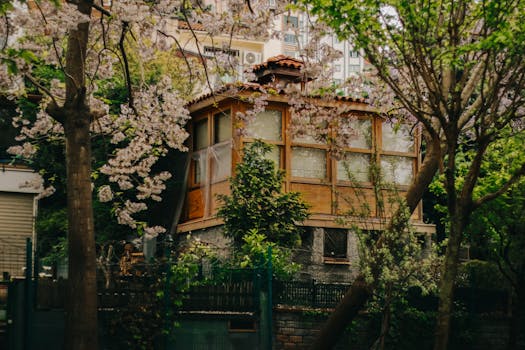
Urban Green Spaces: The Future of Outdoor Living in European Cities by 2025
Urban Green Spaces are becoming increasingly important in European cities as they provide a sustainable and healthy environment for citizens to live and thrive. With the growing concern of climate change and urbanization, cities are looking for ways to reduce their carbon footprint and create green spaces that not only beautify the city but also provide numerous benefits to the community.
Benefits of Urban Green Spaces
Urban Green Spaces have numerous benefits, including reducing air pollution, mitigating the urban heat island effect, and providing habitats for wildlife. They also offer a space for recreation, socialization, and relaxation, which is essential for mental and physical health. Furthermore, green spaces can help to reduce noise pollution, improve air quality, and increase property values.
Current State of Urban Green Spaces in European Cities
Many European cities are already investing in urban green spaces, with some cities having more green spaces than others. For example, Vienna has over 50% of its area dedicated to green spaces, while Paris has over 300 parks and gardens. However, there is still a need for more green spaces in many cities, particularly in densely populated areas.
Future of Urban Green Spaces in European Cities by 2025
By 2025, it is expected that urban green spaces will become even more prominent in European cities. With the increasing awareness of the importance of sustainability and green infrastructure, cities are likely to invest more in creating and maintaining green spaces. This will not only improve the aesthetic appeal of cities but also provide numerous benefits to the community, including improved air and water quality, reduced noise pollution, and increased opportunities for recreation and socialization.
Examples of Successful Urban Green Space Projects
There are many examples of successful urban green space projects in European cities. For example, the High Line in London is a former industrial area that has been transformed into a green space, providing a unique area for recreation and socialization. Another example is the Park de la Villette in Paris, which is a large park that offers a range of activities, including concerts, festivals, and sports events.
Challenges and Opportunities
While there are many benefits to urban green spaces, there are also challenges and opportunities that need to be considered. For example, the maintenance and upkeep of green spaces can be costly, and there may be conflicts between different stakeholders, such as residents, businesses, and city officials. However, these challenges also present opportunities for innovation and creativity, such as the use of green roofs, vertical gardens, and other forms of green infrastructure.
Conclusion
In conclusion, urban green spaces are becoming increasingly important in European cities, and by 2025, they are expected to play a vital role in creating sustainable and healthy environments for citizens. With the numerous benefits they provide, including reducing air pollution, mitigating the urban heat island effect, and providing habitats for wildlife, it is essential that cities invest in creating and maintaining green spaces. By doing so, they can create a better future for their citizens and contribute to a more sustainable and environmentally friendly Europe.






